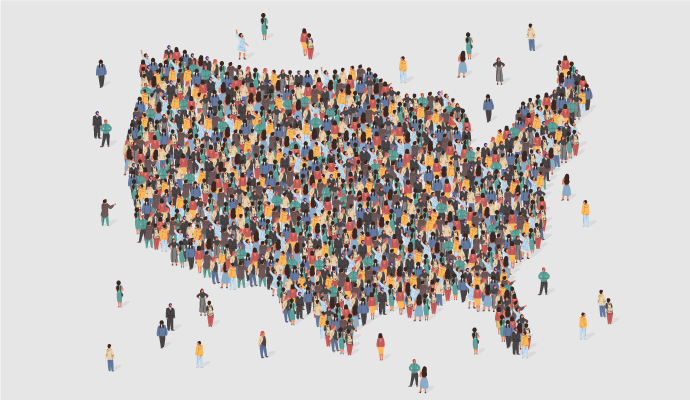Travel Distance Key Barrier to Abortion, Reproductive Care Access
Facing upwards of a 50-mile trek, individuals seeking abortion care access end up going without due to the extreme travel distances.

Source: Getty Images
- In a new assessment of reproductive and abortion care access, researchers have found that long travel distance is a leading barrier to care.
The study, published in JAMA Network Open by researchers from the School of Public Health at UC Berkeley, comes as the Supreme Court of the United States is poised to reverse Roe vs. Wade, igniting trigger laws across the country that would legally bar patient access to care in certain states. According to the researchers, there are 26 states that would or are likely to enact abortion bans following a potential undoing of Roe.
Ahead of that, reproductive healthcare experts across the country are preparing for swathes of women traveling over state lines to places where it is legal to access abortion care and potentially other types of reproductive healthcare.
But if those places are too far, the researchers found the patient is unlikely to follow through with getting the healthcare she needs, the researchers found.
“Previous research has estimated that the average travel distance to reach an abortion provider will increase substantially (56 to 156 miles on average) if Roe v. Wade is overturned, with the greatest impacts in states where abortion access is already restricted,” study lead author Elizabeth Pleasants, MPH, a doctoral candidate at UC Berkeley School of Public Health, said in a press release.
READ MORE: “First Do No Harm:” Combatting Black Maternal Health Disparities
“The reversal or weakening of Roe v. Wade will have implications for timely abortion access and abortion rates across the country.”
The researchers looked at likelihood to access abortion care by geographic distance using data from the Google Ads Abortion Access study, which was conducted between August 2017 and May 2018. The study included nearly 1,500 pregnant individuals from all 50 states, plus the District of Columbia.
The researchers grouped respondents by how far they lived from the nearest abortion care provider: less than five miles (27 percent of respondents), between five and 24 miles (44 percent of respondents), between 25 and 49 miles (19 percent of respondents), and more than or equal to 50 miles (44 percent of respondents).
An overwhelming majority of respondents said they faced at least one distance-related care access barrier, with the likelihood of facing a care access barrier growing the further a respondent lived from the nearest provider.
For example, about 62 percent of folks living fewer than five miles from the nearest abortion provider reported having to gather money for travel expenses; 81 percent of those living between 25 and 49 miles away and 76 percent of those living further than 50 miles reported the same.
“Living farther from an abortion facility is associated with increased burdens in the process of seeking an abortion, including direct and indirect travel costs, which can pose a particular challenge for individuals with economic disadvantages,” the researchers said in the report.
Notably, long travel distances to abortion providers led to delayed access to abortion. By study’s end, 409 (48 percent) participants said they’d gotten an abortion regardless of where they lived, while 32 percent were still seeking one and 20 percent decided to carry out the pregnancy.
“Given these findings and the known challenges posed to abortion access by long travel distances to reach a provider, we sought to explore the impacts of distance to an abortion-providing facility on abortion attainment in this sample,” Pleasants explained.
Folks who lived 50 miles or more from the nearest abortion provider were more likely to be trying to figure out to get an abortion or to say they are following through with the pregnancy, as compared to those living five miles away.
White participants living in areas with more restrictive abortion laws were more likely to live far away from an abortion provider, and thus more likely to face care access barriers and ultimately not be able to access care.
“While past studies have explored the importance of travel distance as a barrier to abortion access, none have looked at individual-level data for people living across to U.S.,” Pleasants pointed out.
“Additionally, none have explored the impacts of travel distance on people considering abortion prior to them reaching an abortion-providing facility,” Pleasants continued. “This study provides novel insights into the impacts of travel distance on access to desired abortion services among this hard-to-reach population of individuals living in states across the U.S. considering abortion.”
The researchers indicated a number of new care access strategies could circumvent the travel barriers some individuals face, but they are widely prohibited. In 33 states, medication abortion is illegal, while 19 states have bans on telehealth abortion, for example.
“Given increases in the number of state-level abortion restrictions during the past decade and concerns about the continued legality of abortion across the US, travel distances to obtain abortions are likely to increase and be associated with decreases in abortion rates and increases in instances of self-managed abortion, unplanned pregnancy rates, and maternal morbidity and mortality,” the researchers concluded in the report. “The outcomes associated with a persistent decline in abortion facilities warrant continued monitoring and research.”
